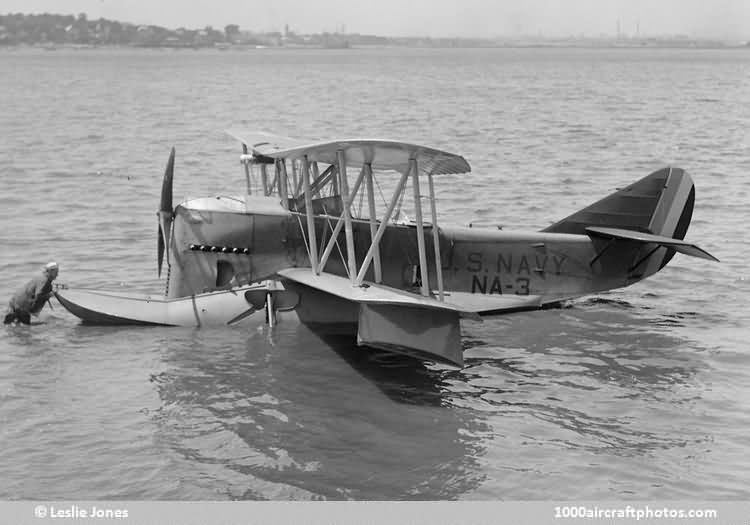06/30/2014. Remarks by Johan Visschedijk: "Of the numerous designs produced by the Loening Aeronautical Engineering Company between 1917 and 1928, the series of Army and Navy amphibians which first appeared in 1923 became the best known. Grover C. Loening, founder of the firm which bore his name, made a number of contributions to aircraft design, and the distinctive amphibian was characteristic of his original approach. It resulted from an attempt to match contemporary landplane performance with an amphibian of similar horsepower.
To achieve this aim Loening adopted the novel approach of using a large single float under the fuselage, rather than a flying boat hull as adopted in other amphibians. The float was faired into the fuselage, and wheels were located on each side, arranged so that they could be swung up out of the way when operating on water. The wings of this design were deliberately made as conventional as possible, and in fact were so similar to those of the DH-4 that they were interchangeable, although of better efficiency.
The first of the Loening amphibians were powered by inverted Liberty engines and were adopted in the observation role by the USAAC as COA-1s. Five identical aircraft were purchased by the USN in 1925 for use in connection with the Arctic Expedition that year, and designated OL-2. The OL-1 designation had already been applied by the Navy to two Loening amphibians under construction with 440 hp Packard 1A-1500 engines and a third cockpit in tandem. The second of these two aircraft incorporated a number of improvements compared with the first, and the Navy ordered four more to this same standard as OL-3s. Another six with the Liberty engine instead of Packard were designated OL-4s.
Three examples of the OL-5 were built, the USCG version of the OL-6 with a modified vertical tail and Liberty engines. Along with three Vought UO-4s, these were the first official USCG aircraft, prior aircraft had come from the USN inventory.
The OL-6 reverted to the Packard engine and had a new, more angular tail shape; 28 were purchased and widely used by USN and USMC units. One of these became the XOL-7 with experimental thick-section wings, and another became the XOL-8 with the first radial engine used in the Loening series, a Pratt & Whitney Wasp. This same engine was used in the 20 production model OL-8s, which were two-seaters and in 20 OL-8As which had arrester gear for carrier deck operation.
Finally, the Navy acquired 26 OL-9s, outwardly similar to the OL-8; by this time, the company had merged with the Keystone Aircraft Corporation, soon to be acquired by the Curtiss-Wright Corporation. The Navy had two other examples of the same basic aircraft for ambulance duties; designated XHL-1, they had a single open cockpit for the pilot and carried six passengers in the fuselage."
